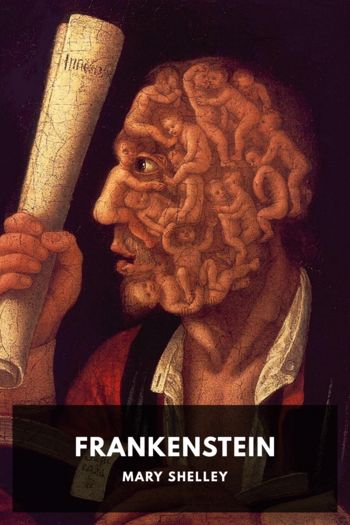Billy Wilder on Assignment Noah Isenberg (little bear else holmelund minarik TXT) 📖

- Author: Noah Isenberg
Book online «Billy Wilder on Assignment Noah Isenberg (little bear else holmelund minarik TXT) 📖». Author Noah Isenberg
B. Z. am Mittag, July 17, 1928
The Valley of the Giants (1927)
AT THE SCHAUBURG
Splendid, these gigantic, thousand-year-old redwood trees, near whose mighty trunks people look like Lilliputians, splendid, these primeval forest landscapes, in which weather-beaten people perform their strenuous daily tasks. They form a superb backdrop for a story—and unfortunately an all-too-American one—of two dogged rivals in the lumber industry.
We don’t understand these unwritten laws in which the fist rules. But there are several scenes, such as the swift descent, that are gripping, and in parts there are welcome injections of humor that provide a break from the near-constant nasty fighting. Enjoyable actors, Milton Sills and Doris Kenyon, ably assist the director, Charles J. Brabin, in presenting an unfamiliar but interesting milieu.
B. Z. am Mittag, July 27, 1928
Die grosse Liebe (The Last Night, 1928)
The Jacobins are camping in the Tronville castle hotel. These tough, grim men form into groups on bits of straw. Between them are pyramids of weapons, with large cooking pots hanging down. The fire slowly dies out. Some of the soldiers are already awake, enjoying themselves while splashing on some water at the castle well. Then the whole group comes alive. Three horsemen burst through the castle gate. Their leader delivers an important message to the officer. On they gallop, while back in the courtyard commands are shouted out, short and sharp—the day will begin with a bloody tribunal. A traitor in front of a tribunal.
An exceedingly picturesque scene from the Terra-Film The Last Night, which is now being shot on the grounds and in the Terra-Glashaus. The script is by Norbert Falk and Robert Liebmann; the director is A. W. Sandberg. In the leading roles are Fritz Kortner, Gösta Ekman, Diomira Jacobini, Karina Bell, and Walter Rilla.
B. Z. am Mittag, July 31, 1928
In the Name of the Law (1922)
AT THE PRIMUS PALACE
The navy, the army, the air force, and now also the police, everything that represents state power over the public and embodies it, is held up high in American films of late. If this film had not aspired to be more than a detective story, it would have had enough elements of suspense to captivate viewers. But a mawkish story about an elderly policeman was tacked on, the inanity of which spoils things and doesn’t even let the suspense added on toward the end work its magic.
Emory Johnson’s direction veers off into a series of subplots that go off on tangents, and it eventually loses the necessary momentum in portraying the battle of the police, represented by the aging policeman and his son, who is a police pilot, against a gang of jewel thieves. On a technical level, the film is a disappointment. And the airplane pursuit of the ringleader of the gang makes us painfully aware of its makeshift studio work. The final battle at the jeweler’s lacks the kind of bone-chilling escalation you expect from American suspense films, even though there are explosions, fires, and a great number of firemen at work. The acting is on this same level.
B. Z. am Mittag, August 3, 1928
Sounds Are Recorded
THE STUDIO SHOTS
Imagine you’ve been invited to be a guest at a house and you show up on time but find the doors locked. That’s what happened to me recently when I visited a studio. A servant stands in front of the door yet doesn’t open it for the visitor; instead, he holds it firmly locked and keeps a good eye on it, refusing to let anyone enter. Here’s why—a talking picture is being filmed.
And now we know: sounds, words, and noises may be produced, spoken, and generated, but only when they are suitable for the scenes, whereas reverberating steps of arriving guests are unlikely to have been intended for the scene being shot. So we wait outside until there’s a break.
Then we can watch Max Mack, who once made the first German Autorenfilm, a signature film of the era, now cranking out the first German sound film using the Tri-Ergon system, silently directing his actors with miming movements of his head, hands, and sometimes his feet, as long as it’s not with his mouth.
“Crank” is not really the right expression, because the camera, four times as large as the usual camera used for films, doesn’t actually have a crank. Once it is adjusted and everything is ready for the shoot, the cameraman activates it by means of an electrical contact, and automatically the camera records the images and sounds on a rolling celluloid tape in parallel strips—incorporating the sounds by electrically converting sound waves into light oscillations—to make image and sound form a complete unit.
The volume is controlled and relayed by the amplifier, an equally complicated machine, which is electrically linked to the camera. The reigning king, Joseph Massolle, inventor of the Tri-Ergon system, is on-site, monitoring the sound design, which requires a comprehensive balancing of the acoustic conditions. For this purpose the room undergoes some degree of soundproofing, because sound comes across differently on a big set than in a closed room.
Microphones are mounted, out of sight, wherever the actors will be standing at a given moment, to make sounds and gestures match up perfectly and coordinate with where the sounds are directed. The actor, who has to pay attention not only to his facial expressions but also to the text and the way the words are expressed, faces substantial difficulties that necessitate exhaustive rehearsals.
The plot of this first talking picture [Ein Tag Film (A Day in Film, 1928)], which is expected to be about five hundred yards long, was also created by Max Mack and offers many avenues to employ speech and





Comments (0)